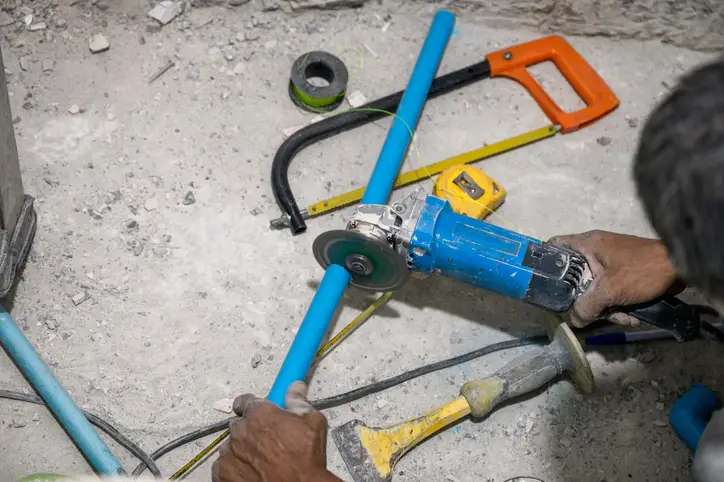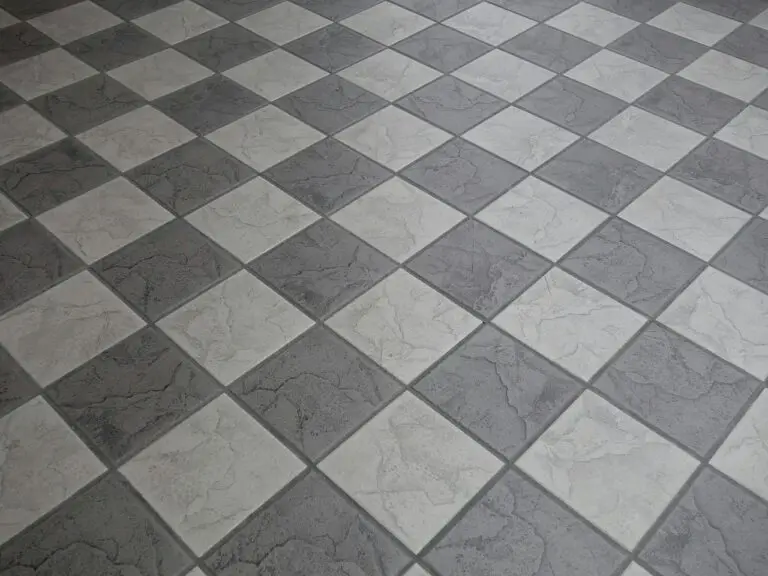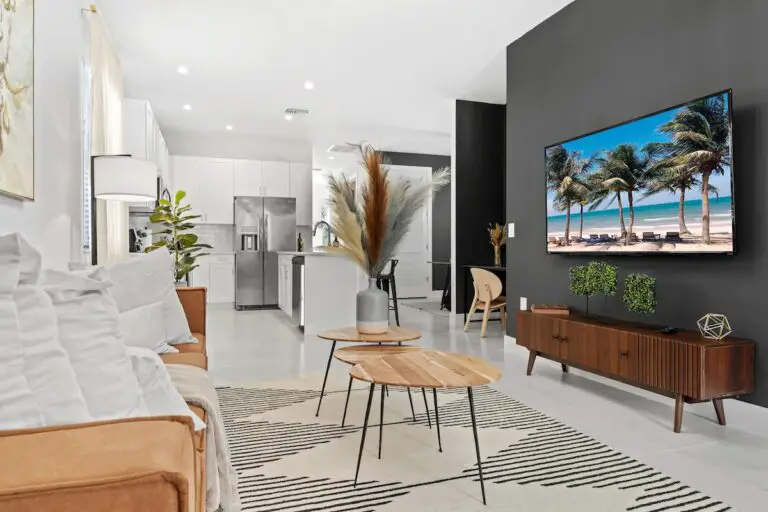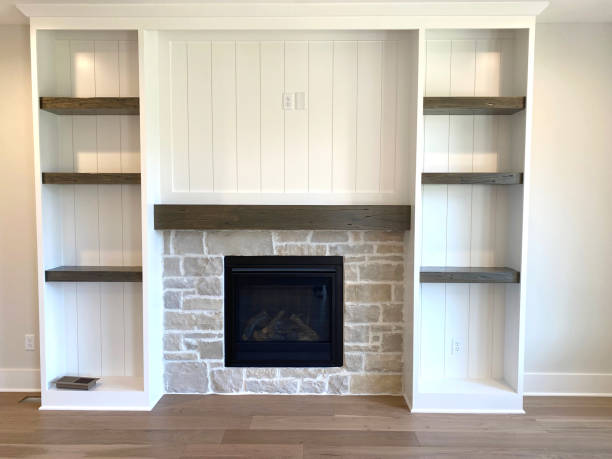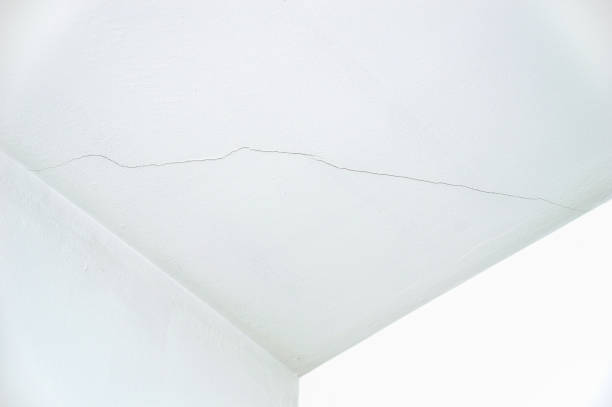10 Creative Ideas to Cover Electrical Panel
We’ve all been there. You’ve just finished decorating a room to perfection, but there’s one eyesore you can’t ignore: the electrical panel. This functional, yet unsightly feature is a necessary part of every home.
So, how can you make it blend in, or better yet, enhance your space? In this article, we’ll explore ten innovative ideas to cover your electrical panel without compromising accessibility or safety.
Ten Innovative Ideas for Your Electric Panel
1. Custom Paint Job
Paint the door or cover of your electrical panel the same color as your wall. This is a simple and cost-effective way to make it blend seamlessly with the surroundings. Remember to use a non-conductive paint and always turn off the power when working near the panel.
2. Wall Art or Tapestry
Hang a beautiful piece of wall art or tapestry in front of the panel. Opt for lightweight pieces to ensure they are easy to remove when you need access. Use hooks or a curtain rod for easy hanging and removal.
3. Decorative Panel or Screen
Use a decorative panel or folding screen to disguise your electrical panel. They come in various styles and materials, from wood to metal, making it easy to match with your décor.
4. Chalkboard or Bulletin Board
Turn the area into a functional space by covering the panel with a chalkboard or bulletin board. This way, you not only hide the panel but also create a space to jot down grocery lists or pin up photos.
5. Bookshelf or Cabinet
Custom-build a shallow cabinet or bookshelf around the electrical panel. Ensure it’s designed in a way that the front can be easily removed or opened when you need access to the panel.
6. Picture or Mirror Frame
Disguise the panel by framing it with a decorative picture or mirror frame. Attach a lightweight picture or mirror to a hinge, so it swings out when you need access.
7. Curtains or Drapes
Install a curtain rod above the panel and hang a stylish curtain or drapes made from linen. This not only covers the panel but also adds a touch of elegance to the space.
8. Wall Plants or Vertical Garden
A wall-mounted plant holder or vertical garden can serve as an organic and vibrant cover. Opt for low-maintenance plants like succulents. Ensure the plants are easily movable for when you need access.
9. Magnetic Board or Decorative Magnet Display
Cover the panel with a magnetic board. This is both decorative and functional, as you can use it to stick notes, photos, or even magnetic art pieces.
10. Removable Wall Decals
Use wall decals or stickers that complement your room’s theme. They are easy to apply and remove, making them a versatile option for covering the electrical panel.
Safety First!
While these ideas can transform your electrical panel into a decorative feature, always prioritize safety. Ensure that:
- The panel remains easily accessible.
- You use non-conductive materials.
- There’s adequate space around the panel for heat dissipation.
- You always turn off the power when working near the panel.
Choosing the Right Cover for Your Home
Once you’ve been inspired by the ideas listed above, choosing the right cover for your electrical panel depends on several factors:
Safety, Safety, Safety.
I know we mentioned safety earlier in this guide, but when considering a cover for your electrical panel, the first and absolute most important aspect to consider is safety. With electrical panels harboring and managing significant amounts of electricity, it is essential that the cover has strong dielectric properties. Materials like laminate sheets and fiberglass are great options, as they have the necessary properties that make for a safe panel cover.
Room Theme and Aesthetics
Consider the overall style and theme of the room where the electrical panel is located. If you have a modern minimalist setup, a sleek magnetic board or a custom paint job might be the best fit. For homes with a vintage or rustic touch, a decorative screen or tapestry could align better with the ambiance.
Frequency of Access
Some homes may need frequent access to their electrical panels, especially if modifications or repairs are ongoing. In such cases, easily removable solutions like wall art, curtains, or drapes might be more practical.
Budget Constraints
While some options, like a custom-built cabinet or bookshelf, can be on the pricier side, others like wall decals or a paint job can be done on a tight budget. Evaluate your spending limits before committing to a solution.
Available Space
The amount of space available around your electrical panel will influence your choice. If there’s limited space, a simple curtain or a paint job might suffice. For larger spaces, options like a vertical garden or a custom bookshelf could be more fitting.
DIY vs. Professional Help
While many of these ideas can be executed as DIY projects, some might require professional expertise, especially if they involve carpentry or detailed customization. Evaluate your skills and decide whether you’re up for a DIY challenge or if it’s better to hire a professional.
Maintenance Matters
No matter which solution you opt for, maintenance is crucial. Ensure that the cover is dusted regularly and inspect it periodically for any wear and tear. Remember that while the aim is to beautify the space, the electrical panel’s primary function is safety. Any cover should not compromise the panel’s integrity or function.
Wrapping Up
The breaker box often finds its place in the laundry room, turning what could be a functional and attractive space into an area dominated by the need to hide the electrical panel box. When considering an electrical panel cover, especially in such frequently-used spaces, it’s vital to bear in mind local electrical codes. Using cabinet doors to conceal the fuse box is a popular choice, giving the laundry room makeover an elegant touch. But, remember, while cabinet doors are stylish, they must still allow easy access to the electrical box in compliance with local building authorities.
For those diving into DIY ideas, consider using an antique window frame or an off-center piece of art to cover breaker boxes, especially in areas like an unfinished basement. As you transition that space into a finished basement, integrating the panel with your design style becomes paramount. Great ideas that blend functionality and aesthetics can transform what once stood out like a sore thumb into a cohesive part of your décor.
In conclusion, while every home has its unique challenges and spaces, finding the perfect solution to integrate or conceal the breaker box needn’t be a Herculean task. With a mix of creativity, adherence to local guidelines, and a keen eye on your overall design objectives, even the most prominent electrical panels can be seamlessly incorporated into your living spaces. Whether you’re working on a laundry room makeover or updating an expansive basement, there’s always a way to ensure safety and style go hand in hand.

